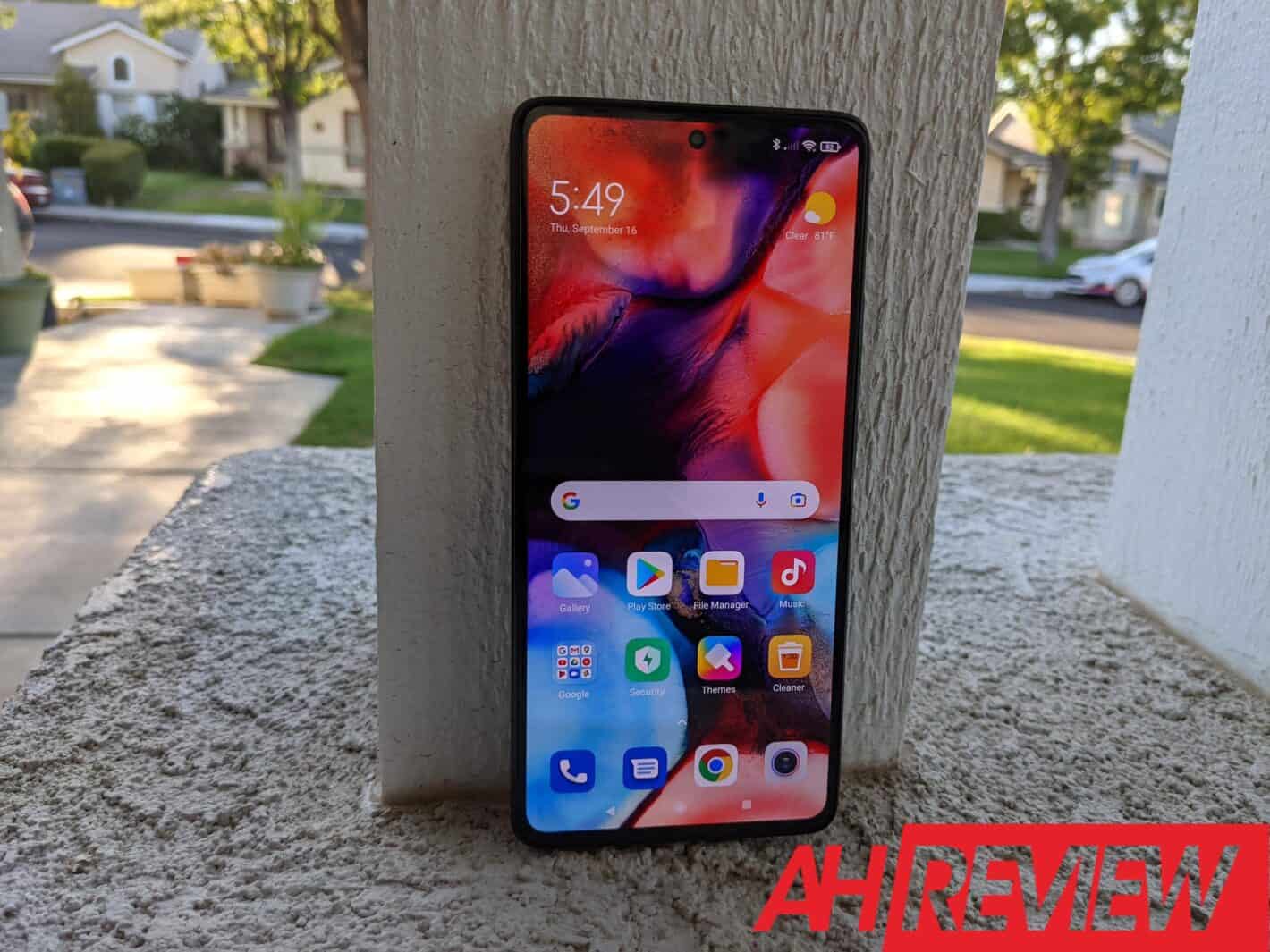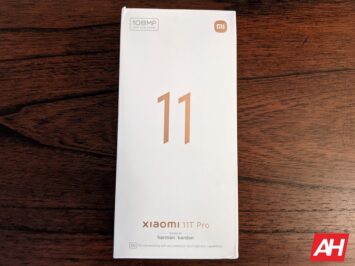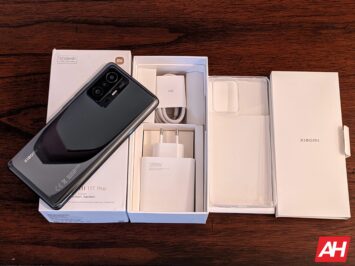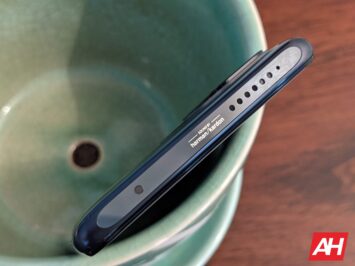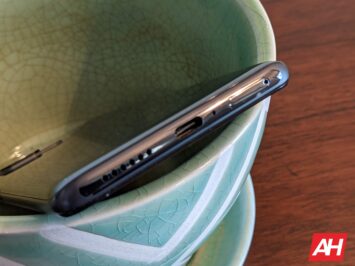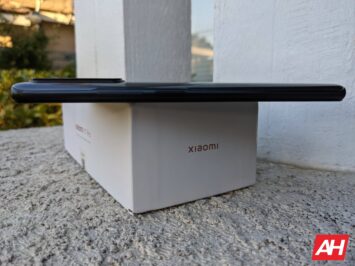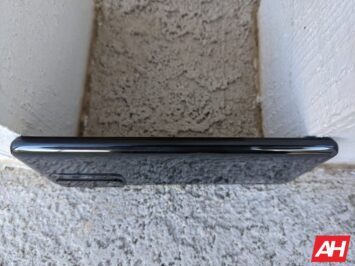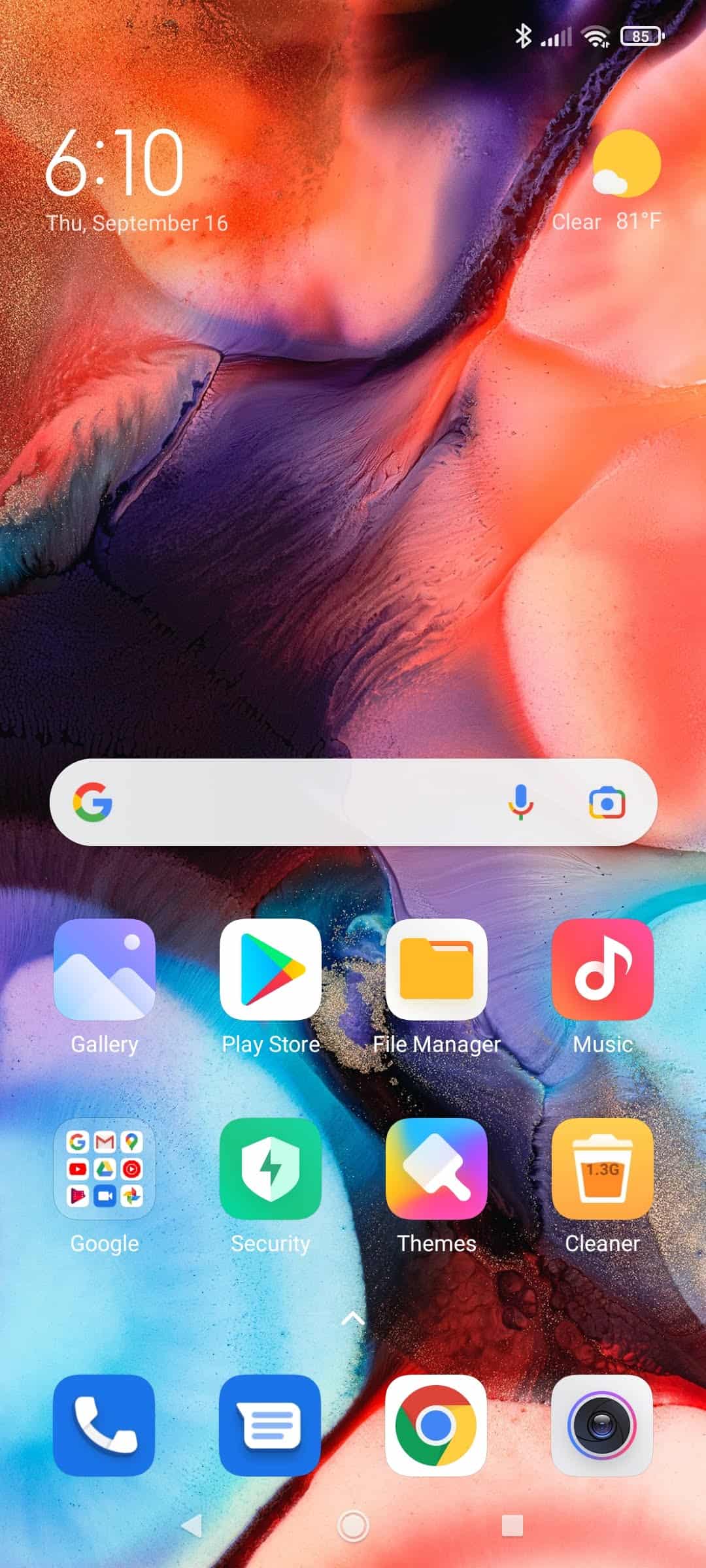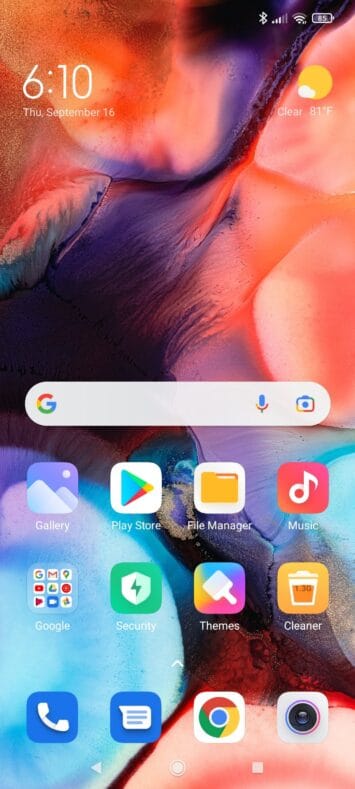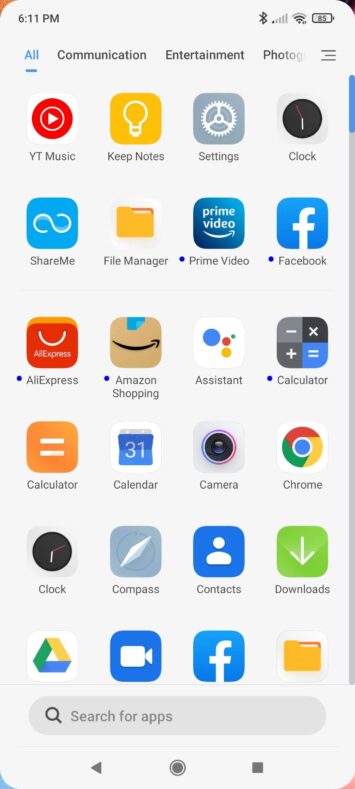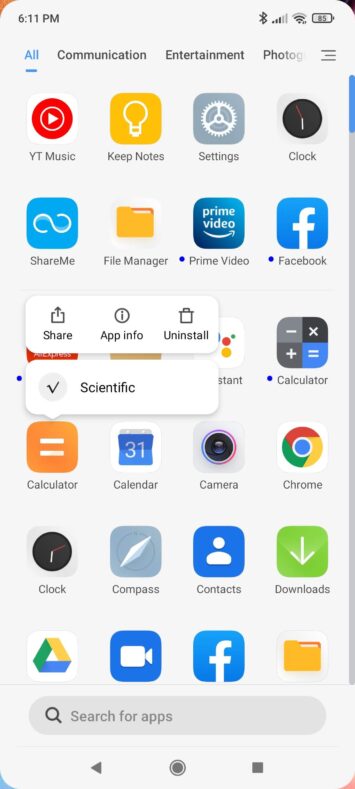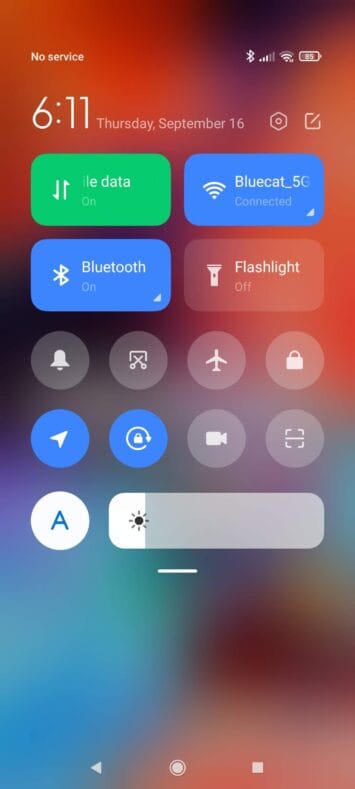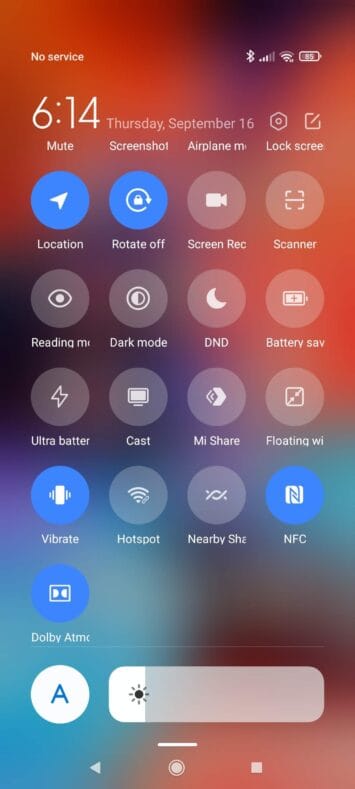Xiaomi 11T Pro is the highest spec phone from the mid-year update cycle on the 11 series. As usual, Xiaomi has managed to cram in some impressive hardware at a reasonable price. The biggest wow factor for the Xiaomi 11T Pro is the 120W HyperCharge which can fully charge the phone in just 17 minutes!

You might be wondering that the ‘Mi’ moniker seems to have vanished from the branding. Yup, the 11T series of the phones are the first to go on sale without being labeled ‘Mi’. Now we all are aware that the top-end flagships come out earlier in the year – for example, Mi 11 Ultra release was March 2021. And that the T series comes out later in the year and tends to cater to the slightly more budget-conscious crowd. This year is no different and Xiaomi is launching a trio of devices – Xiaomi 11T Pro, Xiaomi 11T, and Xiaomi 11Lite 5G NE.
AndroidHeadlines received the Xiaomi 11T Pro for review. The main difference between the 11T Pro and 11T seems to be the chipset – Snapdragon 888 versus Dimensity 1200 respectively.
To get the price of the 11T Pro down to €649, there seems to be a fair bit of corporate parts bin mix and match going on. But Xiaomi has been playing this game for a while now. Consequently, they are really good at getting all the bits and pieces to work together cohesively. In the detailed review, we will look at which parts for the 11T Pro are borrowed from prior Xiaomi devices. Despite a bit of copy-paste, the end result is still a flagship-like experience for less with the Xiaomi 11T Pro.
Unboxing the Xiaomi 11T Pro
Unboxing is a very ho-hum affair. Simple and to the point after all this is the mid-year refresh. The biggest wow factor in the box besides the 11T Pro smartphone is of course that massive 120W power charging brick. There is a TPU clear case and a factory-applied film screen protector on the smartphone.
Hardware and Design Impressions
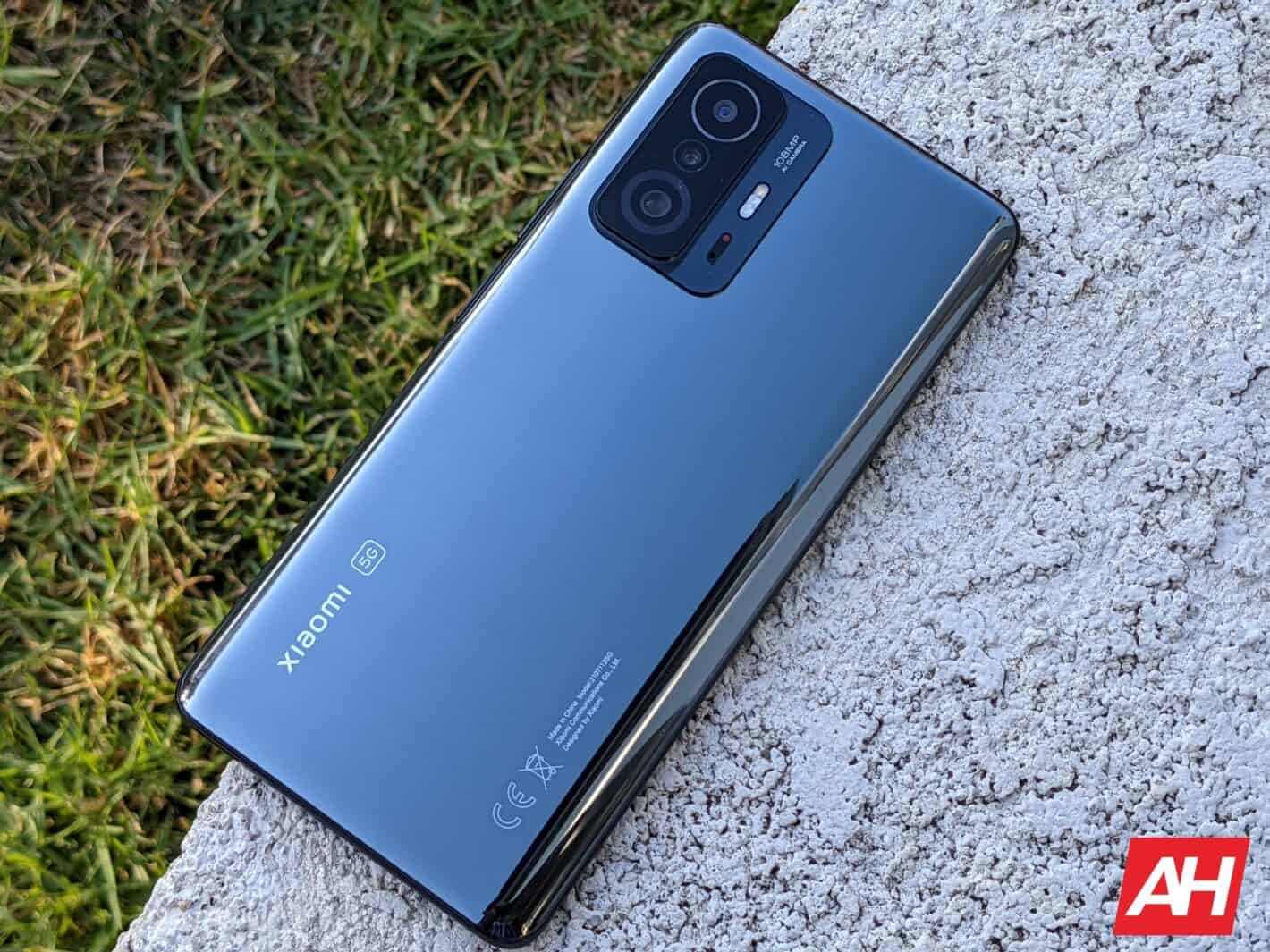
The design language on the Xiaomi 11T Pro reminds me a lot of the Poco X3 GT that showed up in early August of this year. Consequently, even though this phone has top-end hardware the overall feel is much towards the budget end Poco series. The only thing from a design language-wise that is comparable to the Mi 11 series is perhaps the upgraded camera module.
Side note, as usual, our review unit is the black color version or Meteorite Gray to be precise. Xiaomi 11T Pro is available in Celestial Blue and Moonlight White besides my Meteorite Gray review version. One day I hope that Xiaomi will send us reviewers the nicer color devices for review.
The back has a brushed texture underneath the glass which gives it a bit of a unique look. However, my biggest gripe is that the texture hides beneath the glass and we are left with a fingerprint magnet of a smartphone. Not to mention an extremely slippery device to hold. That purple color vegan leather from the Mi 11 would have been a much better option Even the ‘glasstic’ from Samsung in their FE series is better than back cover on the 11T Pro.
Camera module layout gets a minor update
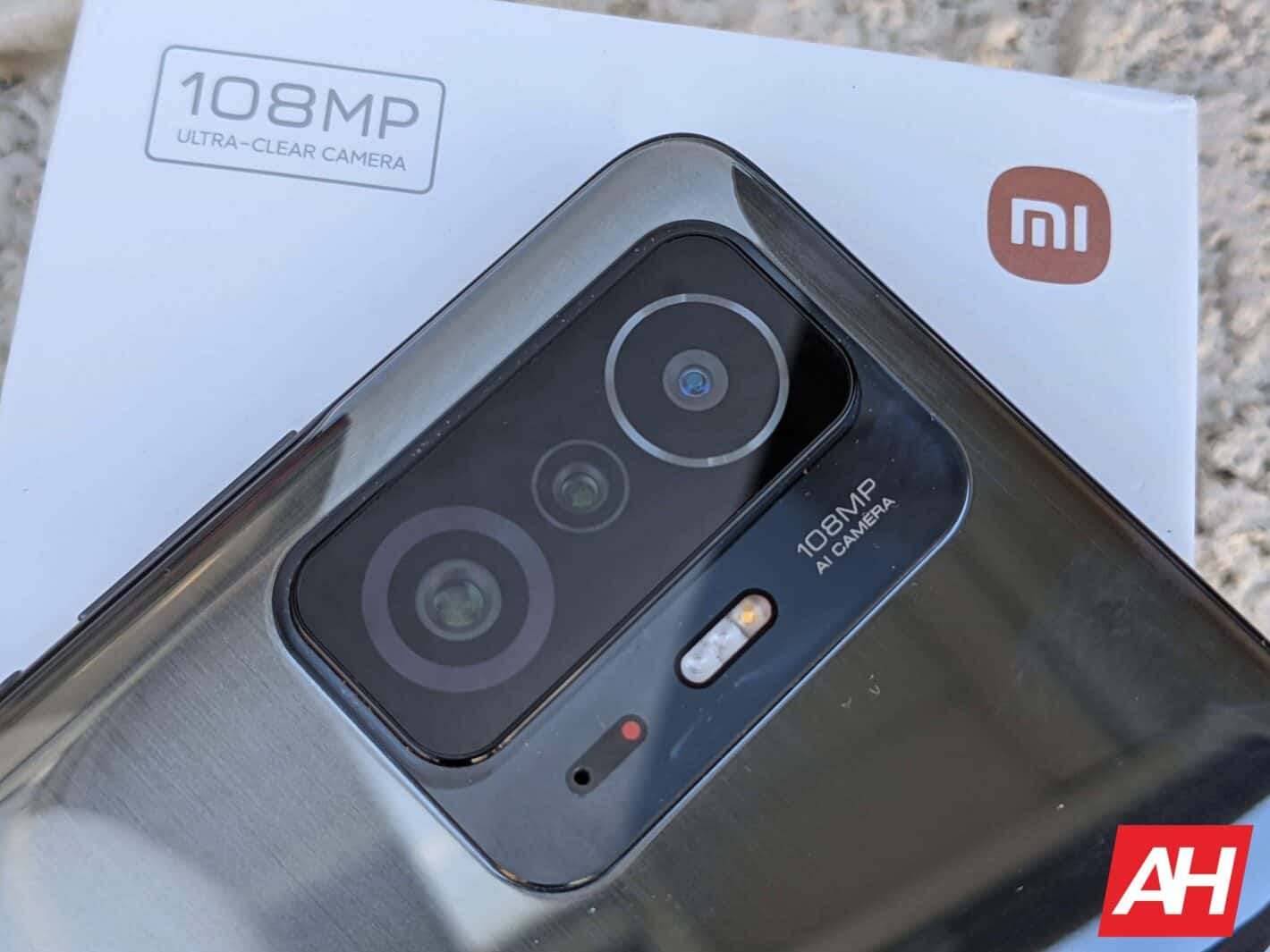
Triple camera module layout gets a slight makeover and I like the way it looks. Full points to Xiaomi for charting their own way in creating a unique camera module look. There is now dual-tone dual-LED and an extra audio zoom microphone below the flash. Just note that the cameras themselves are a carryover from Mi 11i.
Rest of the phone is typical of Xiaomi. Fingerprint scanner is integral to the power button on the right-hand side rail and above it is the volume rocker. On the top, there is a speaker grill and IR port along with a ‘sound by harman/kardon’ logo. The left-hand side rail is clean and on the bottom rail, we get the dual SIM tray slot, microphone, USB-C port, and a speaker grille.
Buttons have great tactile feel, fingerprint scanner is fast and accurate. Haptic motor is strong and haptic feedback is quite good compared to prior Xiaomi devices.
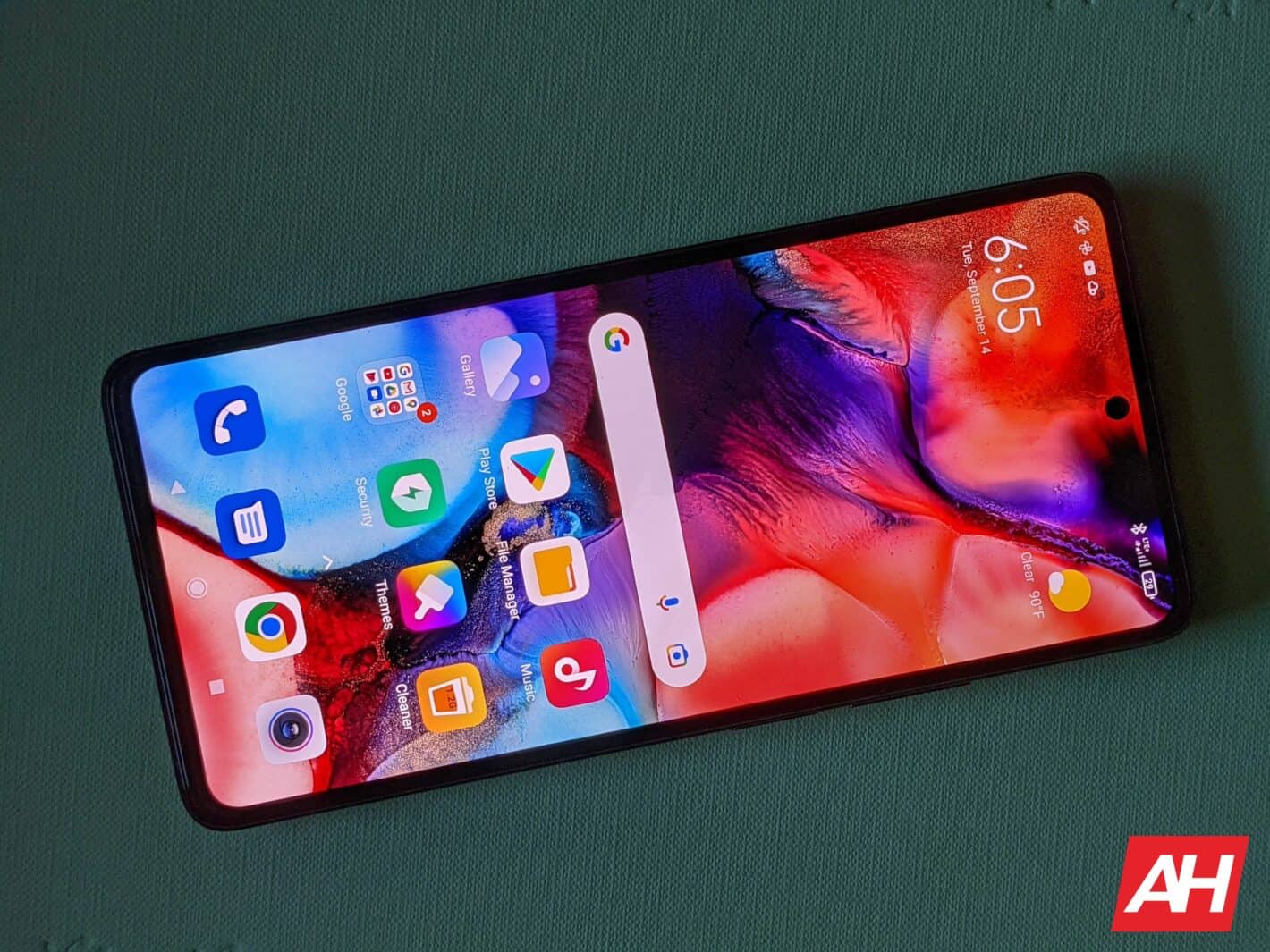
On the front is a large 6.67″ 120Hz refresh rate AMOLED display which is also found on Mi Mix 4. The display is protected via Gorilla Glass Victus and there is a tiny hole in the middle at the top for the selfie camera.
Overall ergonomics are good for a large-screen smartphone that weighs 204 grams (7.20 oz). The curved edges on the back make it easy to grip in one hand. Also, the tiny uniform bezels all around the large display help to keep the size manageable for one-hand usage. But you don’t get that premium device feeling with the 11T Pro as compared to the Mi 11.
Display gets a massive upgrade over the previous version
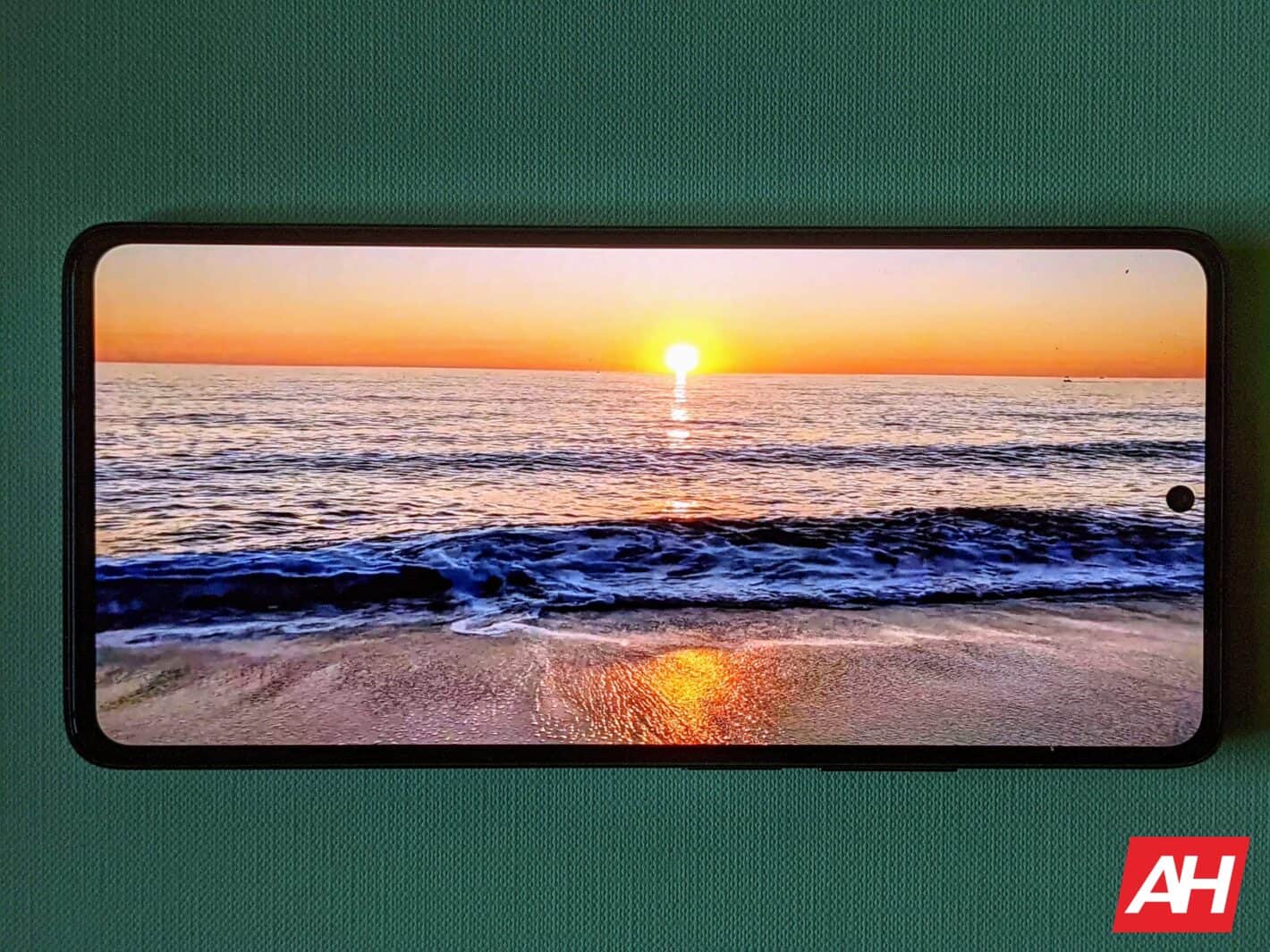
The biggest gripe against the Mi 10T Pro was the IPS LCD display panel. Xiaomi has rectified that by putting in an AMOLED 120Hz HDR10 compliant display on the 11T Pro. In addition, the display on the 11T pro is the same one found on the Mix 4 series, albeit for the 11T Pro we do get a hole punch for the selfie camera.
Xiaomi claims that this panel gets Display Mate’s A+ rating. But you can see a bit of cost-cutting here since the Mi 11i has a better Super AMOLED display panel with higher peak brightness levels. Thankfully Xiaomi didn’t skimp on the glass protecting the display. As a result, we get more shatter-resistant but scratch-prone Gorilla Glass Victus. Luckily there is the factory film screen protector on the phone out of the box which is a good bonus.
Couple of other things to note about the display. The touch sensors have an incredible 480Hz sampling rate so the gaming experience should be quite good on this device. And in addition to HDR10, the display also supports Dolby Vision. This is a trickle-down feature from their top-end devices like the Mix 4. Along with these features, there is Widevine L1 DRM support so you can enjoy streaming content from Netflix or Disney+ in full HD Dolby Vision.
I did find the display to be a bit punchy and saturated in the out-of-the-box setting. But a quick toggle to the P3 seemed to resolve that issue for my particular case. As usual, there is a plethora of options in the Display settings that you can tweak till you are happy with the end result.
Performance on Xiaomi 11T Pro is stellar thanks to Snapdragon 888 and 8GB RAM
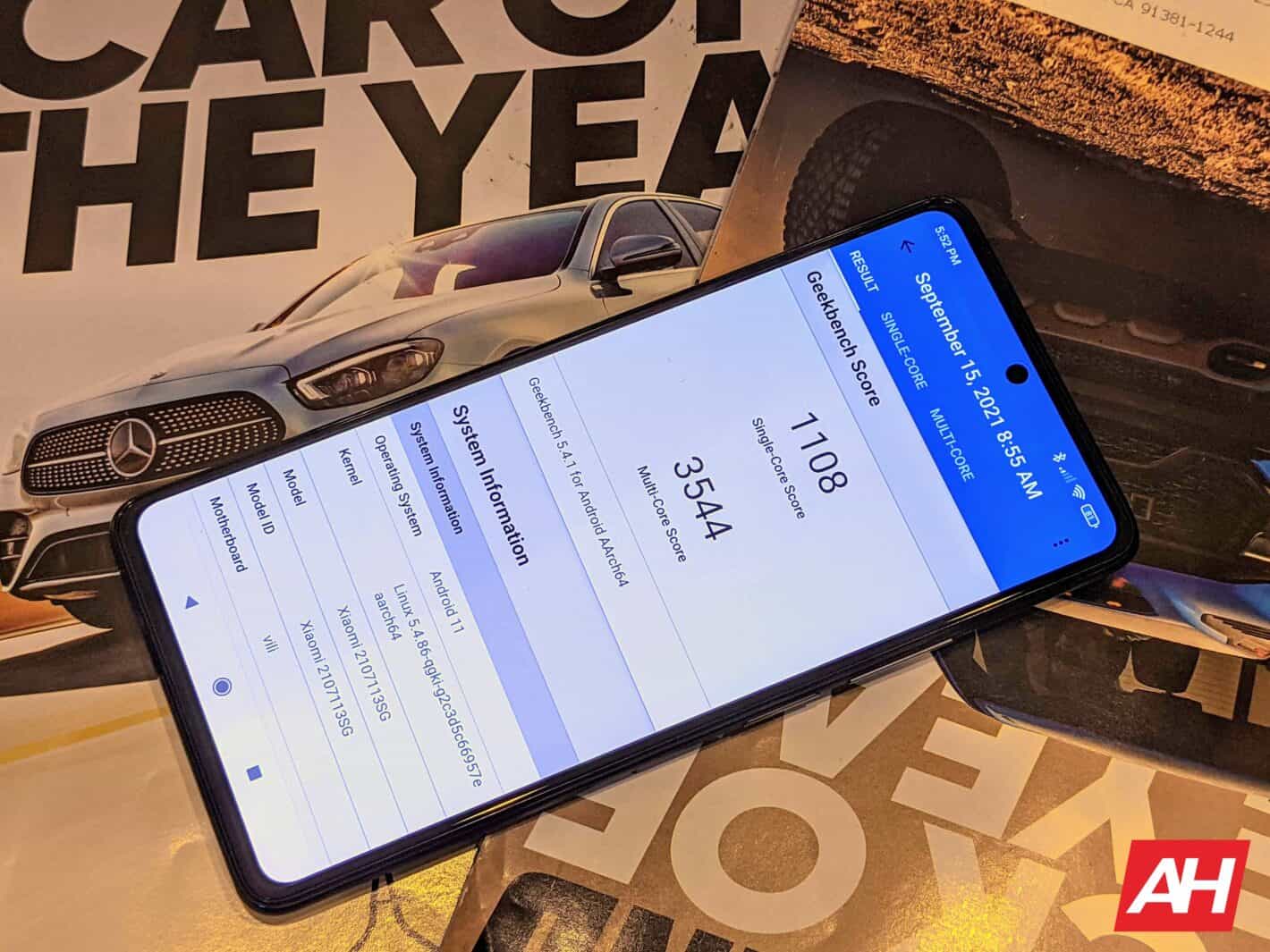
The 11T Pro is powered by Snapdragon 888 and has 8GB LPDDR5 RAM in the base version. This setup is identical to what is found in the original Mi 11 and Mi 11i. Storage options start at 128GB and top out at 256GB. There is a high-end 11T Pro with 256GB storage and 12GB RAM. Thankfully all variants get the speedy UFS3.1 internal storage.
Geekbench 5.1 scores are in line with what you would expect for the 11T Pro. The single-core score is 1108 and the multi-core score is 3544. The OpenCL Compute benchmark score is an impressive 4756. So from a performance standpoint, there shouldn’t be any major gripes or complaints. I did have to wait to run the Geekbench test just after the launch since Xiaomi blocks that prior to the lifting of the launch embargo.
The phone chugs along fine without excessive overheating while playing games such as Genshin Impact. This is primarily because the Snapdragon 888 is paired with a 1080p display instead of a 1440p panel.
My review unit is in the middle of the road option and comes with 8GB RAM and 256GB storage. Since there is no expandable SD card storage available anymore it may not be a bad idea to get the 256GB storage option.
MIUI 12.5 feels fluid, fast, and snappy on the Xiaomi 11T Pro

My review unit is running MIUI 12.5.3 Global version. The Android security update on it is July 2021. We have reviewed MIUI exhaustively before so for this review let’s focus on the improvements Xiaomi has made in the jump from MIUI 12 to MIUI 12.5.
Now MIUI 12.5 is mostly a continuation of MIUI 12; there aren’t any huge changes that you will notice right away. But as you use the phone you start noticing the under the hood optimizations Xiaomi has been working on.
First off the phone feels snappy in daily use, dare I say almost iPhone level of snappiness. My daily driver Pixel 4a 5G feels utterly slow in comparison in terms of swipes, loading of apps, switching apps, going back to home screen – well for just about everything.
The next big change is a feature we all have been waiting for. Which is that now the user has the ability to uninstall system apps. There are seven apps that are off-limits because Xiaomi deems them to be critical. Other than those seven, you can uninstall every app in MIUI 12.5. For instance, the Xiaomi Calculator app can now be deleted without any fuss. Similarly, you can uninstall just about every Xiaomi service – Notes, Weather, Scanner, Compass, Screen Recorder, and more. This allows you to set up MIUI with basically zero bloatware. Now hopefully this rubs off on Samsung who seems to have gone off the deep end with bloatware and ads lately.
There are a few preinstalled apps besides the standard Xiaomi apps, however, you can uninstall all of these apps – Facebook, LinkedIn, AliExpress, Amazon Shopping, and WP Office. In addition, there are no annoying pop-up ads when you install apps from the Play Store which is something most users will appreciate.
In conclusion, while the overall interface might look familiar you will notice an improvement in your daily experience with MIUI 12.5.3 on the Xiaomi 11T Pro.
A big 5000 mAh battery and 120W HyperCharge

The biggest hype around the 11T Pro is its ability to handle 120W fast charging. Thankfully, there is a 120W fast charger inside the box. It has a USB-A connector on the power brick and uses 20V and 6A to achieve the 120W output at the brick.
I am pretty sure that the power does go down a bit at the actual USB-C port on the smartphone. Nevertheless, 120W charging on paper and in real life is an impressive achievement. One word of caution, please use the hefty OEM cable that comes in the box, since 6A is a fairly high amount of amperage traveling through the cable. The last thing you want is a fire hazard of some sort in your living/work environment.
The 5000 mAh battery (same as Mi11 Pro but dual-cell) lasts all day without any issues even at the 120Hz default refresh rate. For two-day battery life, I suggest you toggle the refresh rate down to the regular 60Hz. But why bother with a low refresh rate when you have 120W HyperCharge support?
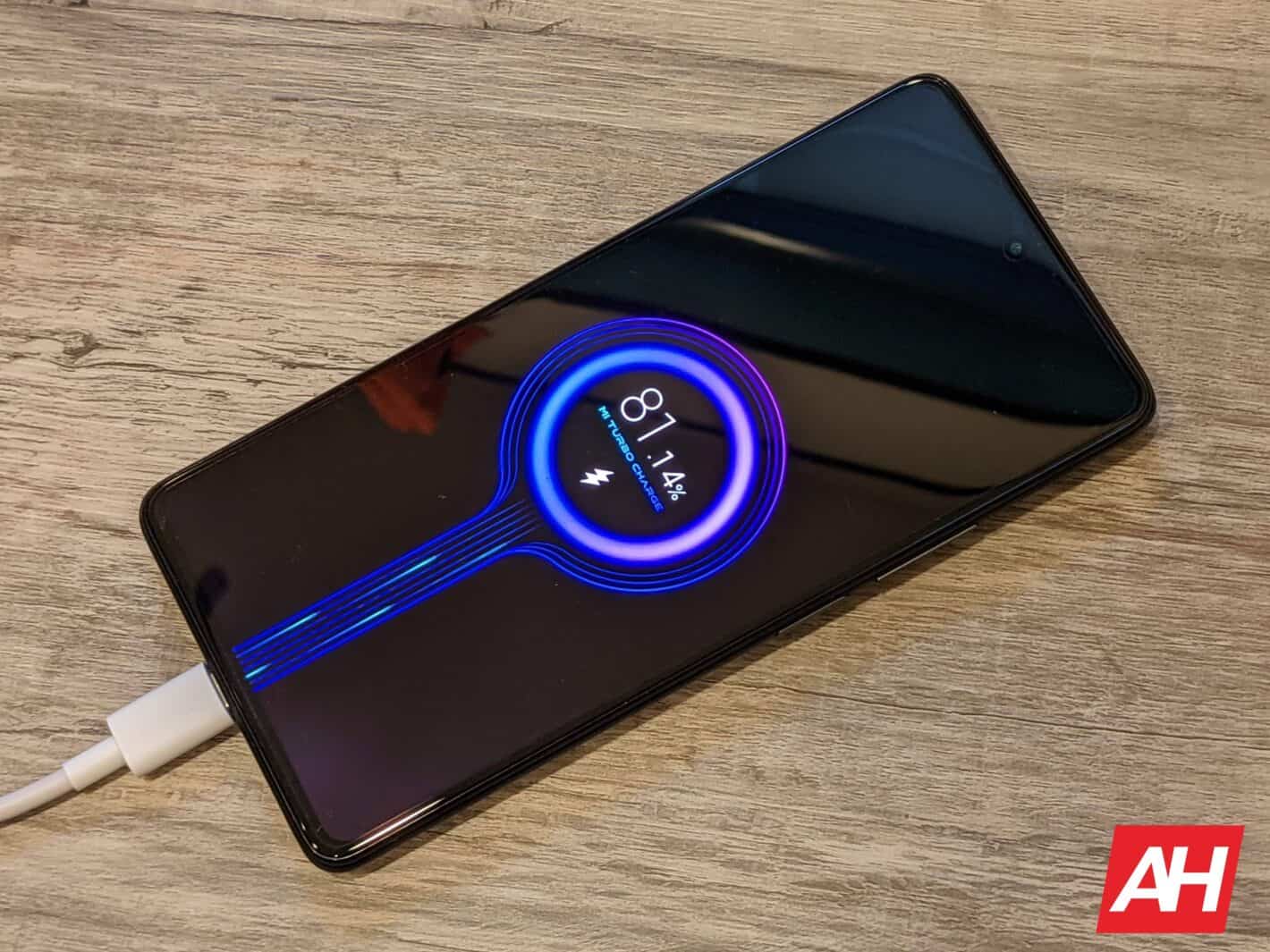
In my review time, I saw the phone get to 100% charge in about 21 minutes or so. This is slightly more than the advertised time of 17 minutes but still plenty fast. In fact, a quick 10-minute charge will get you to around 65-70% charge which should last for almost a day. In a pinch, you may even want to toggle the refresh rate down for a full day’s use with about 10 minutes of charging. Not bad, eh?
Audio is absolutely stellar with dual stereo speakers tuned by Harman Kardon
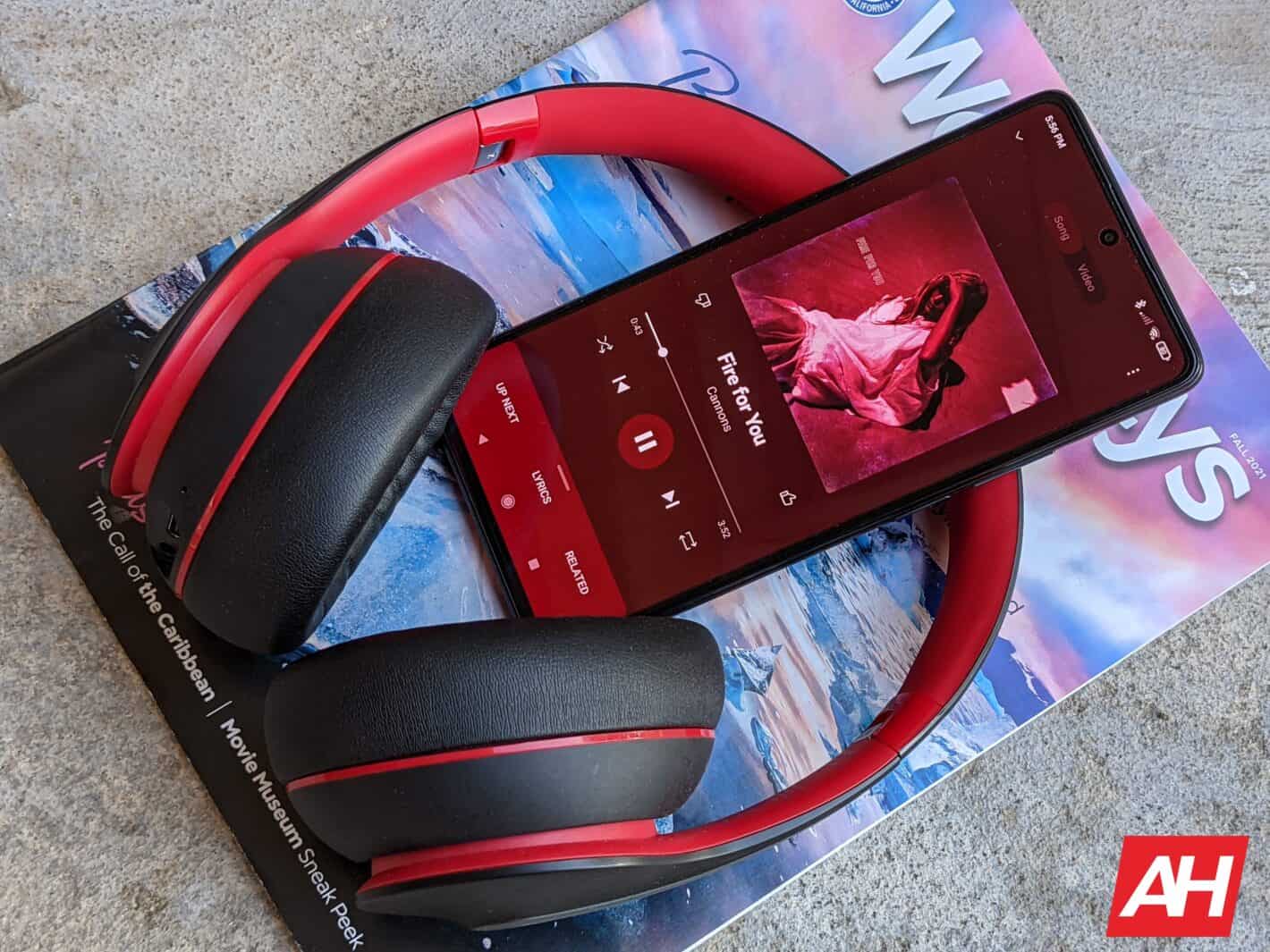
Xiaomi is one of the few smartphone manufacturers that consistently offers dual stereo speakers on most of their devices. The Xiaomi 11T Pro is no exception. And this time around they are offering a true dual stereo speaker setup complete with separate speaker grilles on top and bottom rails.
The two speakers are tuned by Harman Kardon. And boy do these speakers sound great. They have the right amount of punchiness as far as bass goes. Mid-tones and vocals sound excellent. They do get plenty loud for speakerphone calls or to even listen to music outdoors in lieu of a Bluetooth speaker.
For people wanting to know whether Dolby Atmos support is on the 11T Pro or not, the short answer is yes and is turned on by default. And my suggestion is to leave it on because it does help with the audio output from the 11T Pro.
Since this is a flagship-like device of course there is no headphone jack. The other slight disappointment in the audio department is the lack of a USB-C to headphone jack dongle which is missing in the box. This is a bit of a headscratcher since Xiaomi routinely includes this on their Poco brand of devices.
I do have USB-C earbuds and can confirm that the audio output via the USB-C port is great. Ditto for audio quality via Bluetooth 5.2 connection.
As usual, MIUI has tons of options to customize audio. These include
Camera performance is good day and night
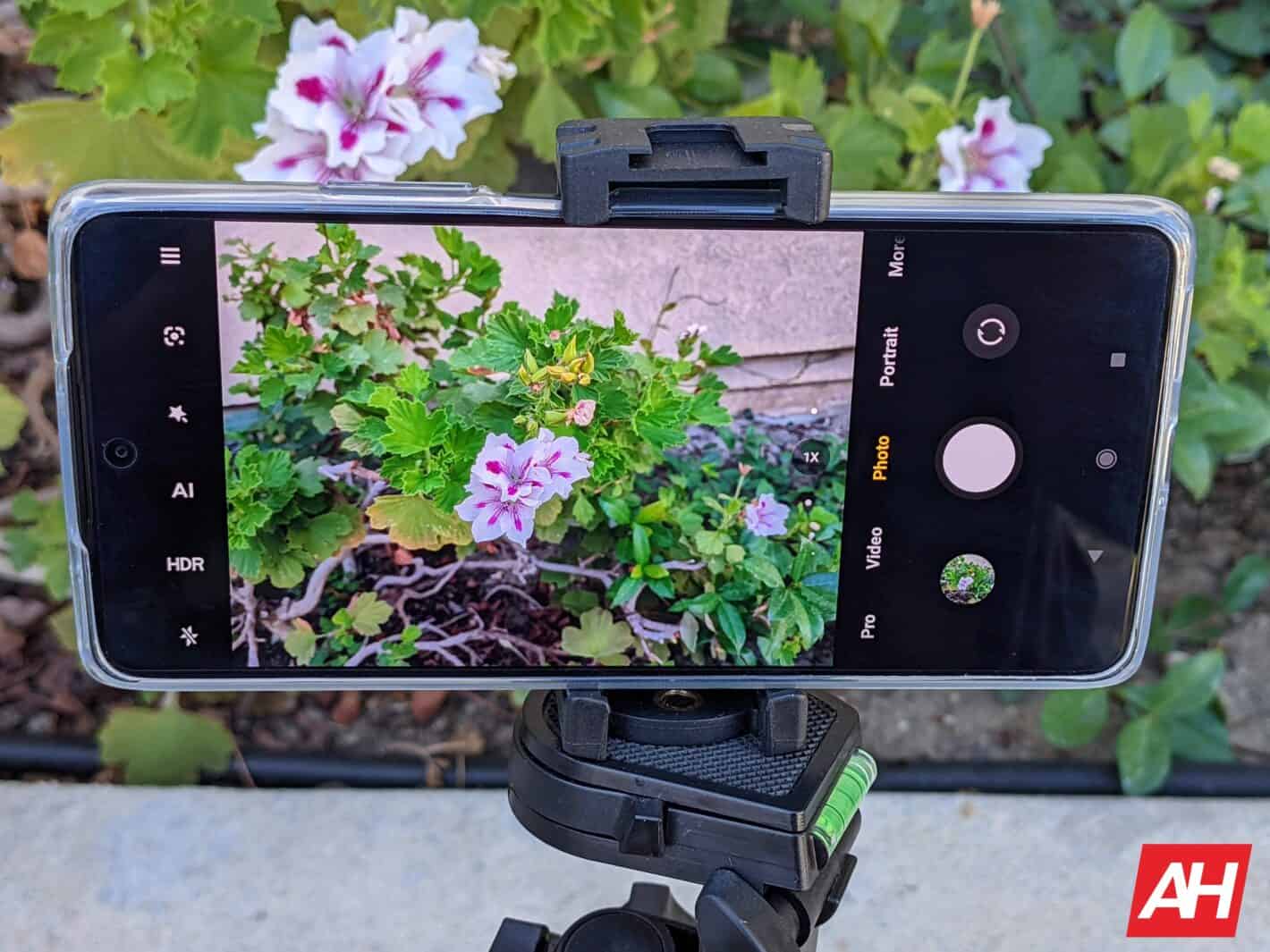
The triple camera module on the rear and the front selfie camera on the Xiaomi 11T Pro are basically identical to those on the Redmi Note 10 Pro. In fact the rear triple cameras are the same as those on the Mi 11i. So results are very similar to those that we got when the Redmi Note 10 Pro came to AndroidHeadlines earlier this year.
Anyway, the 11T Pro has a 108MP main camera, an 8MP ultrawide, and a 5MP telemacro lens. A dual-tone dual-LED flash with an audio zoom microphone is incorporated in the large camera array in the back. The front selfie camera is a 16MP f/2.5 lens with 1.0 micron pixels.
Photo quality from the main camera is excellent in any lighting situation

The Xiaomi 11T Pro’s main camera in broad daylight takes pictures with good detail, dynamic range, contrast, and accurate colors. There is very little to no noise in the pictures. However, there seems to be a bit more sharpening than usual with this particular iteration. Keep in mind on the phone’s screen the images look great but on a large screen monitor some of the issues become a bit more evident.
A quick way to see the differences is to take a 108MP picture and then scale it down to 12MP. You will notice that this method yields pictures with better results than the comparable point-and-shoot 12MP auto mode. I am hoping enough reviewers point this out and Xiaomi fixes this in the future via a software update.
For the general user though the results are fine for sharing and viewing over a smartphone screen regardless of which mode you use. One point to note, by themselves the 108MP images aren’t that great except to downsize them to 12MP.
There is no official zoom lens so the 2X zoom is just digital zoom. So keep that in mind when using the 2X zoom mode. You can create great punchy images for sharing on social media by using the AI trigger in the camera app menu.
Portrait photos are detailed and sharp with good background separation in terms of simulated blur. Still not as great as the Pixel series but better than a lot of other smartphones. Just stay away from complicated headgear or haircuts and you should be fine.
Ultrawide camera results are quite decent in daylight
Ultrawide camera results in daylight have good detail, with low noise, good dynamic range, and reasonably accurate colors. There is a slight color shift compared to the main camera since the ultrawide results do not look as punchy.
Photos taken with Auto Night Mode on the ultrawide camera are basically fine. Colors are mostly natural and the picture looks close enough to what you see with the naked eye. I would still say that the results from the main camera are definitely better compared to the ultrawide.
Then there is Manual Night Mode which helps get pictures with balanced exposure, a little more detail, and less noise compared to the previous setting. Pro tip, do not even attempt to take pictures with the ultrawide camera at night in the normal camera mode.
Telemacro camera is probably one of the best
Most Chinese smartphone makers get to a triple camera setup by offering a lowly 2MP camera as the macro camera. Xiaomi charts a different path and gives us a proper 5MP macro camera. It has a close to 50mm focal length and you can tap to focus on the subject. The end result is images with good contrast and color without loss of detail. And there is a nice bokeh effect because the subject has to be very close to being in focus.
Of the many phones that have passed through in recent memory, the Xiaomi 11T Pro has probably the most functional macro camera in my opinion. You will actually find situations to use it unlike other phones where the ultrawide often yields better results than the macro camera.
Night mode results from Main Camera are excellent
The Xiaomi 11T Pro, supports Auto Night Mode which is turned on by default kinda like Apple. In regular point and shoot mode results from the 11T Pro compare quite nicely with those from my Pixel 4a 5G via Night Sight.
Let’s look at some nighttime shots taken with the 11T Pro’s main camera. For reference, there are a couple of side-by-side images with the Pixel 4a 5G.
I like the pictures from the 11T Pro, they seem to have good exposure, detail, and sharpness (slightly better than the Pixel when cropped in). There is slightly more brightness because of a fairly larger sensor.
One thing to note is that what you see on the viewfinder is a bit artificial but the final image post-processing in the gallery looks much closer to reality. There were a few instances where I had to take a couple of shots to get one without any blurriness. But that learning curve is not steep at all.
I liked the output from the Auto Night Mode and didn’t tinker much with Manual Night Mode on the main camera. The reason being it takes about 3-5 seconds total to take the image and process it and that is hard to do with a steady hand. Perhaps things could be improved via a tripod.

Pictures taken without Night Mode in the regular Photo setting aren’t bad. However, in each situation, you will like the end result of the Auto Night Mode more. So I suggest you just stick to the Auto Night Mode and stop worrying about the quality of the photos.
Xiaomi 11T Pro Camera Samples - Flickr Gallery
In short, the main camera is great in day and night light and is quite versatile in either scenario. Ultrawide camera is excellent in daylight and so is the 5MP macro camera. You will quite enjoy still photography from the three cameras on the Xiaomi 11T Pro.
Selfies are good enough for social media viewing on small screens
Selfie camera is a carry-over from the Redmi Note 10 Pro. Results from the 16MP selfie camera with a ƒ/2.45 lens are very good. There is plenty of detail, good exposure, and just a tad hint of punchiness in terms of color.
Portrait mode works very well including good edge detection. If you decide to pixel peep your selfies you might see some issues but nothing too egregious.
Video recording capabilities aren’t changed from what we saw in the Redmi Note 10 Pro so will not be going into details in this review.
5G global connectivity out of the box in many geographies

For some weird reason, I get LTE/LTE+ symbols on my 11T Pro instead of 5G which I saw on the Poco X3 GT a few weeks ago. But I chalk this up to operator compatibility issues since this is a global device.
Here in the Los Angeles Metro area on the T-Mobile network, the 11T works just fine. Download speeds are comparable to my daily driver which is a T-Mobile Pixel 4a 5G.
During voice calls, I see that the network switches over to 4G mode which leads me to believe that VoLTE is not supported at least on T-Mobile in the USA. Now, I did make sure that the correct APN settings were toggled on in the Network settings menu. As is the case with most Xiaomi smartphones, I suspect that this issue is carrier-specific to USA. In other geographies, this should not be an issue in terms of VoLTE or 5G signal.
One quick observation about voice calls is that speakerphone calls are a bit louder and clearer to the person on the other end. To round out the connectivity section, there’s Bluetooth, Mi Share, Nearby Share, Cast, and IR Blaster. Bluetooth is 5.2 with aptX HD support so there’s absolutely no lag when using BT earbuds.
There is built-in Google Pay support out of the box via NFC. I made good use of it a few times during my review period. Xiaomi is one smartphone manufacturer that consistently ranks at the top in terms of offering multiple connectivity options on their entire range of devices.
Should you buy the Xiaomi 11T Pro?
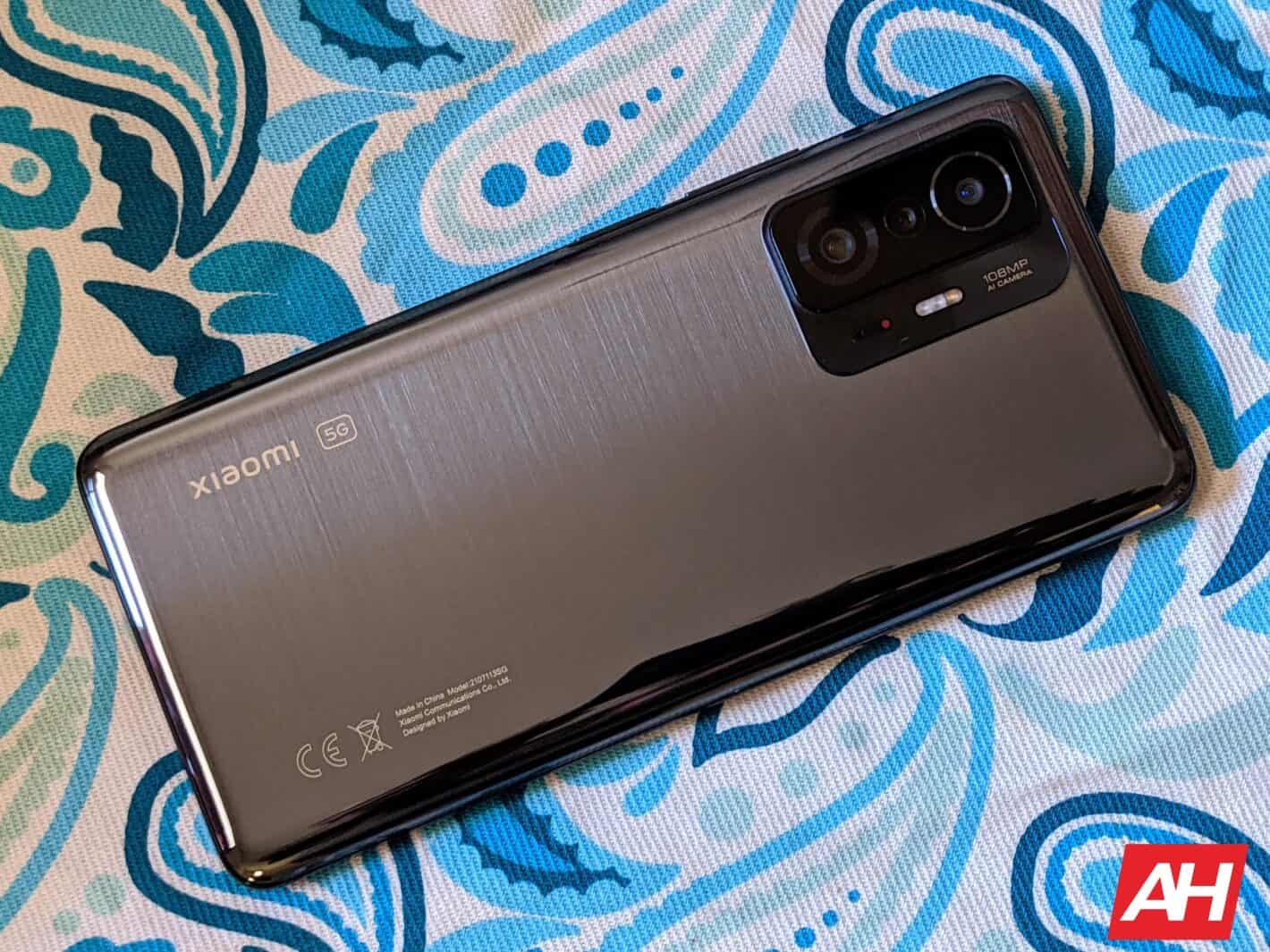
So for about €649 you are basically getting the Mi 11i with the Mix 4 display (selfie hole included) and the selfie camera from the Redmi Note 10 Pro. On paper, you get a smartphone with a great chipset, 120Hz refresh rate AMOLED display, stereo speakers, capable cameras, good battery life, and the crazy 120W HyperCharge. And in a vacuum the price looks quite reasonable when comparing to a whole lot of devices.
Unfortunately, there’s a case to be made here for Xiaomi competing with itself as far as the 11T Pro is concerned. The biggest competitors to the 11T Pro are other smartphones from Xiaomi itself. For example, you can get the Mi 11 for €699 which arguably has a better build quality, better screen, better cameras, better IP rating, and fast wireless charging. Or for €530 get the Mi 11i which has a better screen, slightly better selfie camera, and a smaller battery. For all three phones, the chipset and base RAM are identical so performance is not going to be different from daily use or gaming perspective.
The only unique feature of the 11T Pro is the 120W charging and a large battery. So you have to decide if that is a must-buy feature. Perhaps you can spend €50 more and get the Mi 11 which is a true flagship. Or save about €100 and get the equally capable Mi 11i for a smaller battery and only 33W charging.
 Newsletter
Newsletter

